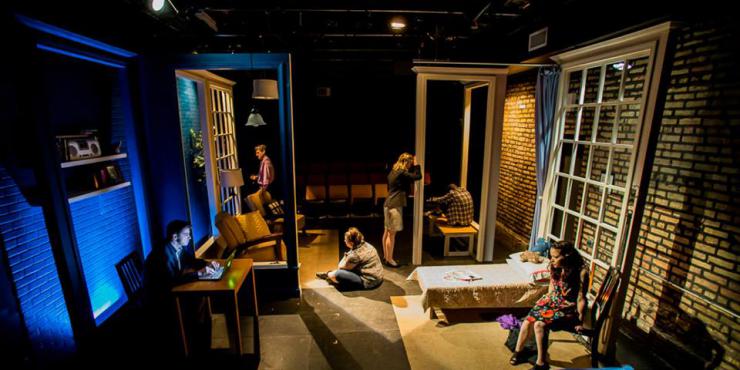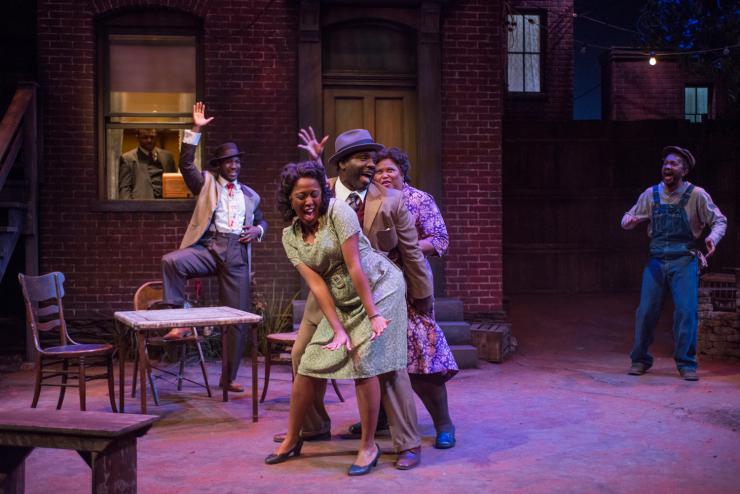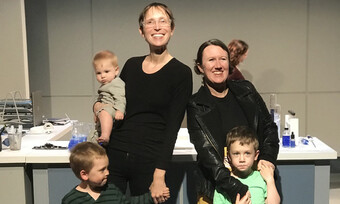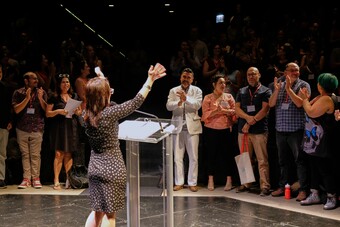Designing Women
Thoughts On a Life
For this week’s series, I asked designers to share their thoughts on some big ideas: process, collaboration, and the pros and cons of a sustainable career in the theatre. I also asked them to share concerns about the way they work today and will have to work tomorrow. As they all have different backgrounds, their processes and feedback vary. I do, however, see the similarities in what they value: community engagement and education, storytelling and collective experience, and the passion for a life in this business. These designers are methodical and thorough in their process, and have found innovative ways to challenge expectations of collaboration. I am honored to be their colleague.
I approached the women I admire first, as a way of getting this forum started. This initial group “answered the call” and said yes! And I am grateful for their time, as everyone is very busy working (including the ones that were not available to chat for this round), which makes me extremely happy.

I am a set designer. And as part of my process I make models—tons of them.
Because I respond viscerally to space, I explore the potential of design ideas in three-dimensional model form; it’s where I am most methodical when I am designing scenery. Model making comes early in the process and I am prolific in showing multiple models. I am sensitive to the presence of the performer, as visual anchor on stage, and my designs take advantage of the compositional potential of a scene. Each rough white model always shows a proposal for a scene or scene shift.
I value the process of inquiry, which varies by playwright, director, and theatre. The design process is initially chaotic, as I consider potential dramaturgical shifts within the story; its repercussions on the shaping of the performance space; and aesthetic choices surrounding the performer.
I define myself as an active and generative artist during the design process. This unique, and sometimes delicate, collaborative process demands that I respond to discoveries made during development, conversations with the director and other designers, and general rehearsals. I value the process of inquiry, which varies by playwright, director, and theatre. The design process is initially chaotic, as I consider potential dramaturgical shifts within the story; its repercussions on the shaping of the performance space; and aesthetic choices surrounding the performer. I feel inspired when working in groups that permit a nuanced understanding of the relationships between space, scenery, movement, and text. The designer’s art is the ability to serve as a catalyst in the valuation of these components, seeking their cultural specificity, and articulating these meanings in visual form from model to fully realized stage scenery.
I know this. I value this.

Now that I am a more seasoned designer, these ideals become less sustainable. As a designer I am proud to be nimble and flexible within the parameters of a project. But our time together as collaborators seems to be getting shorter, and we must accomplish more in less time. I also don’t live in the city anymore. I worry about making it safely back and forth to Chicago in the middle of the night, so I rely quite a bit more on Skype to remain engaged in the process. I also worry about production funding, which seems to be more and more unreliable as budgets continue to come and go at any point in the season.
I’ve designed that production that never received the check from the Foundation.
I’ve designed the show that the Board decided to cut funding for, perhaps a bit too late.
I've designed the production that was “rescheduled” for that season yet to be announced.
What happens with the thoughtful and thorough dramaturgical inquiry that was actually completed? How do we “turn off” from one project and move on? Do we empty the binder, file away notes, and then clean the studio?
Designers are thoughtful collaborators. Many of us value citizenship and responsibility—to our communities, to family, to love. I clearly understand that it is our responsibility to champion each other and foster artistic talent wherever we see it. Because of this many of us have answered the call and become educators. I see examples of this generosity everyday in the Latina/o Theatre Commons and its allies as well. But more on that later and through Café Onda.
I thank you in advance for checking in with us as the week progresses and connect with our first group of designers; strong women in design.
For Jamie and Rosalba.








Comments
The article is just the start of the conversation—we want to know what you think about this subject, too! HowlRound is a space for knowledge-sharing, and we welcome spirited, thoughtful, and on-topic dialogue. Find our full comments policy here
Your writing is on our wall! Each day we look at one of your design pieces for The Red Rose, on display at the theater. We do not pause enough as a theater community to reflect on issues that impact the work of designers. Thank you, Regina! For everything!
I'm a female scenic designer. I've been working on and off for the last 20 years. I rarely get to meet other scenic designers to talk about these issues. I'm so glad a director friend of mine sent me this. Too often, I feel, theatre designers within a discipline don't get to mingle.
Thanks for sharing! It's great to get some insight into women designers and learn more about your process. Looking forward to reading more!